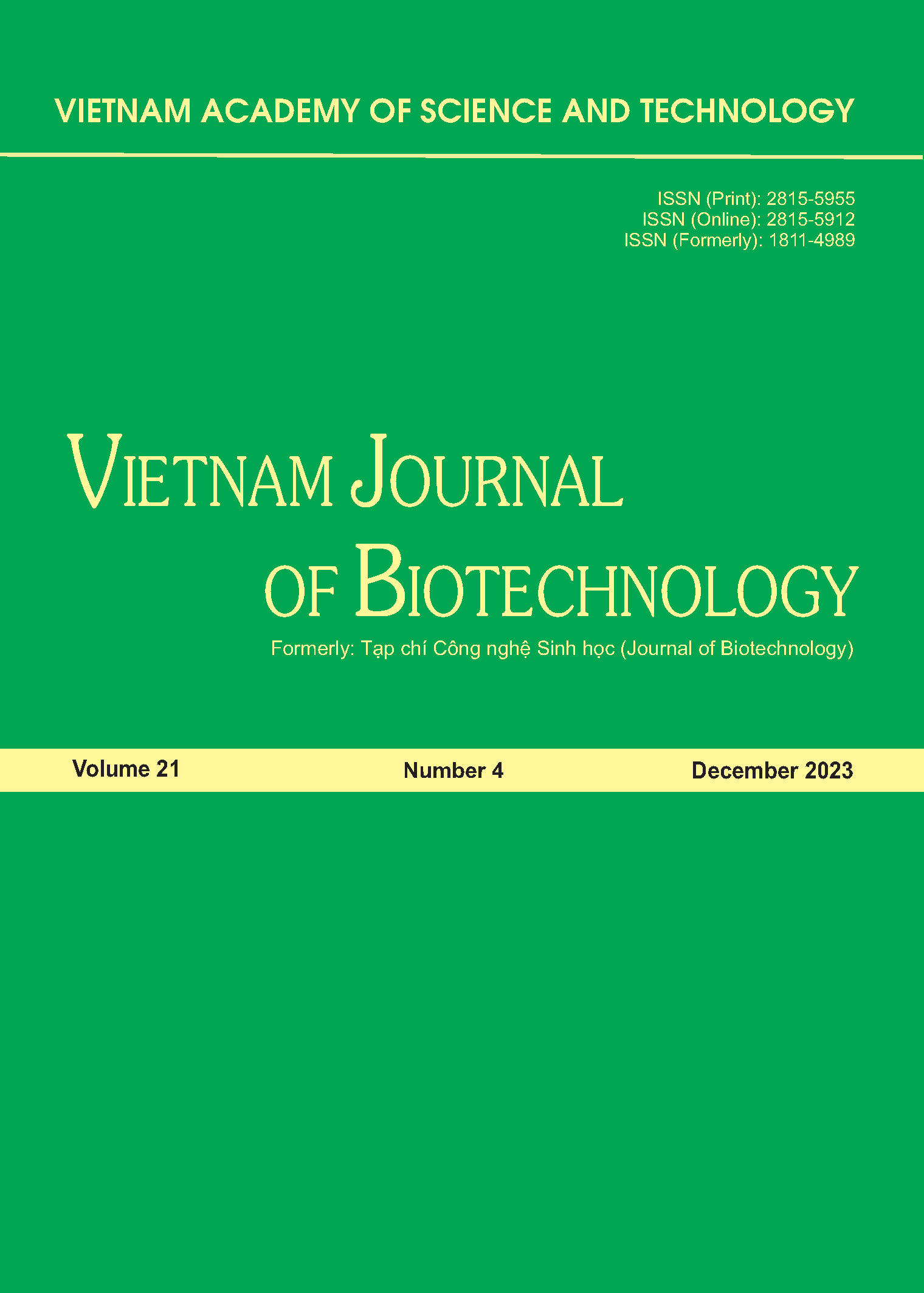Mutation of rsmC gene from Serratia marcescens QBN using CRISPR-Cas9 to enhance prodigiosin synthesis
Author affiliations
DOI:
https://doi.org/10.15625/1811-4989/20412Abstract
Prodigiosin is a bright red pigment, which is produced by various gram-negative and gram positive bacteria include S. marcescens, Hahella chejuensis, Vibrio psychroerythrus, Streptomyces coelicolor and many marine bacteria such as Pseudomonas sp, Vibrio sp. Prodigiosin has garnered considerable interest among the scientific community due to its immunosuppressive and anticancer properties against various drug-resistant cancer cell lines. In this study, we utilized the biosynthetic pathway of prodigiosin (Pg), using CRISPR/Cas9 gene editing techniques to eliminate the gene inhibiting Pg synthesis, known as rsmC, aiming to enhance the ability to synthesize Pg from S. marcescens strains. The rsmC gene of S. marcescens QBN was randomly mutated using the CRISPR-Cas9 system with the pCasPA vector (containing Cas9) and pCRISPR (carrying the spacer segment and sgRNA synthesis). A 20-nucleotide spacer segment was selected on rsmCpreceding the TGG triplet at the 3' end (PAM, the recognition site of Cas9) and inserted into pCRISPR between two BsaI sites. Following the binding of sgRNA to Cas9, mutations occurred in the nucleotides of the rsmC gene, resulting in the cleavage of the double-stranded DNA at the targeted site. A sequence homologous to the rsmC gene, lacking 100 nucleotides, was introduced into the cell and will involve the cleaved DNA's repair mechanism. The mutated rsmC strain of S. marcescens QBN synthesized Pg at 216 - 231 mg/L, higher than the original strain (180 mg/L). Furthermore, HPLC results and 1H spectral analysis showed that the synthesized red pigment from the mutated strain S. marcescens QBN was prodigiosin. These findings provide a basis for further improving the productivity of Pg synthesis in the S. marcescens QBN strain and serve as a basis for editing genes in other microorganisms using the CRISPR-Cas9 system.
Downloads
Downloads
Published
How to Cite
Issue
Section
Funding data
-
National Foundation for Science and Technology Development
Grant numbers 106.02-2018.332







